What are the benefits of squats?
The benefits of squats are wide and varied – discover the science behind why this type of compound exercise is so beneficial
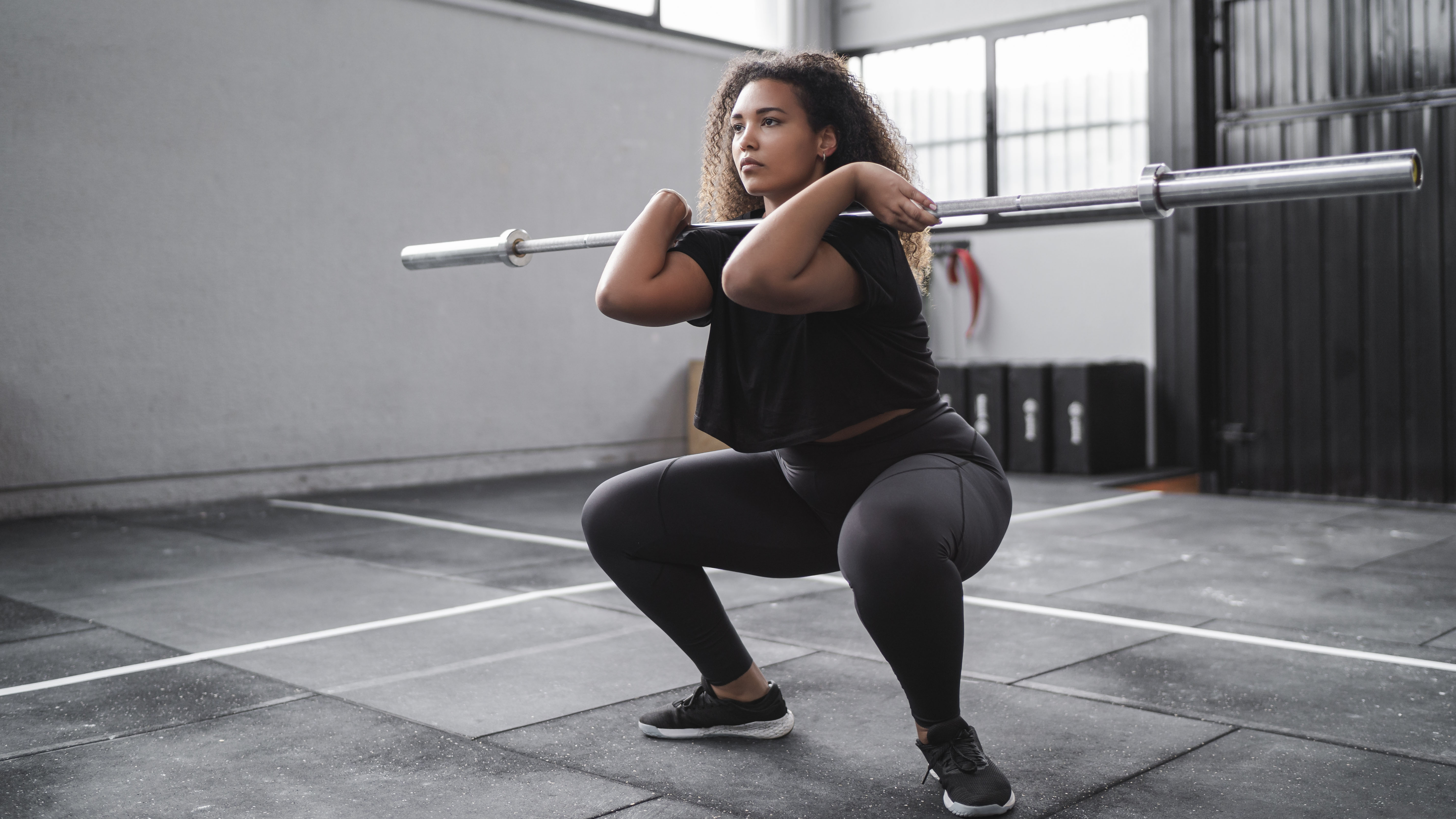
Lots of people perform them, but what are the benefits of squats? Well, as it turns out, plenty! Athletes and bodybuilders often use squats as a strength training exercise to improve lower body strength. This can be achieved by using your own bodyweight or adding some extra resistance to your workout with a pair of the best adjustable dumbbells or a barbell and weight plates.
However Chris Gagliardi, an American Council on Exercise certified personal trainer, says this form of strength conditioning exercise isn’t just for professionals. “Squats are beneficial for everyone,” he tells us. “From elite athletes to older adults and women during the postpartum period.” But why is this? The Center for Disease Control and Prevention says building strength helps to reduce the risk of age-related conditions like osteoporosis and sarcopenia, as well as improving posture, focus and balance. And performing a squat is no different.
Whether you choose to use one of the best resistance bands or opt for your own bodyweight, the benefits of squats are immense. Below we dive into the science behind it all, including exploring the main squat variations and the correct squat form.
What are the benefits of squats?
1. It builds lower body muscle
Squatting can help you build muscle in your lower body, research published in the BMC Sports Science, Medicine and Rehabilitation journal has found. That’s because the leg-focused exercise requires your lower posterior chain (which includes your low back, glutes, hamstrings and calf muscles) to work together as you squat your body down and back up again.
According to the British Journal of Sports Medicine, muscle building happens when you perform exercises that use resistance – like squats. But whether you are building muscle or maintaining muscle, Gagliardi says squatting is ‘essential during daily living’. He explains: “Including squats as part of your exercise routine will help to ensure that you have the required muscular strength and endurance to continue to do the things you enjoy in life.”
2. Squats keep you functional
Without even meaning to, most of us squat every day. According to a study published in the BMC Sports Science, Medicine and Rehabilitation journal , squatting ‘features components of everyday functional movements’, like sitting down and standing up.
“Squatting is considered a bend-and-lift movement which is one of the five primary movement patterns that we use throughout daily life,” Gagliardi tells us. “Consider that every time you stand from a sitting position, or squat down to pick an object up off the floor, you are doing a squat. Squats are something we do often, and it is important to have the appropriate muscular fitness and power to perform squats throughout your activities of daily living.”
Get the world’s most fascinating discoveries delivered straight to your inbox.
3. Squats can improve your joint stability and posture
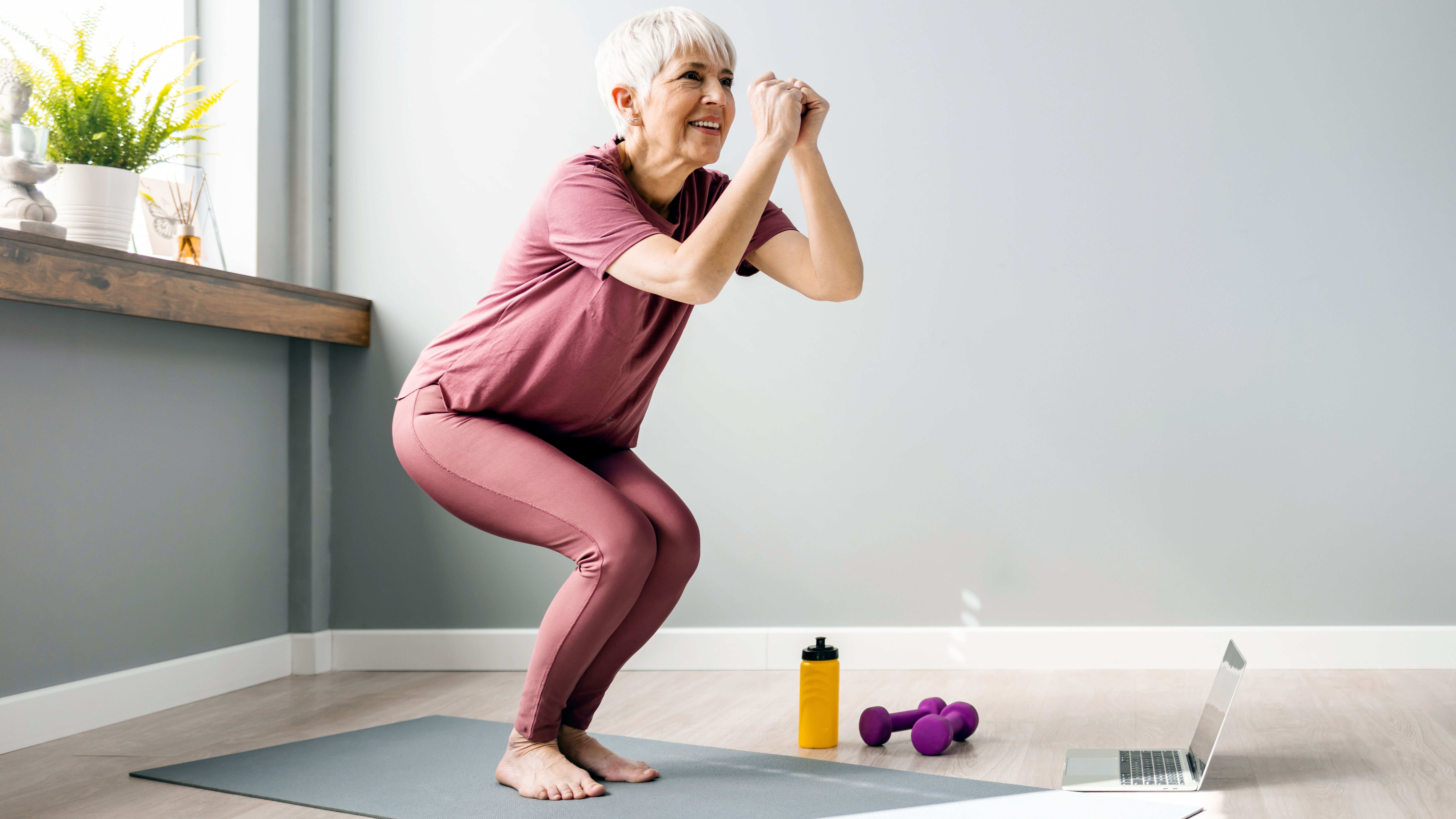
Squatting doesn’t just target your muscles. According to Gagliardi: “Performing squats helps to teach proper movement patterns with proper postural and joint stability.” And science agrees. One study published in the Journal of Strength and Conditioning Research, found squats can improve bone mineral density (BMD). This helps to add strength to your skeleton and maintain sturdier bones.
Further research published in The Journal of Human Kinetics concluded that squats are four times more likely to activate the spine muscles than planks. These are the muscles which help you stand up and therefore aid posture.
4. You can burn fat
While some people turn to running to lose weight, weight loss can also be achieved by performing compound exercises such as squatting. As concluded by a 2022 peer reviewed chapter in the book Weight Management - Challenges and Opportunities: “Resistance training (RT) exercises for weight management should focus on large muscle groups and those exercises utilizing compound movements, such Olympic lifts, deadlifts and squats.”
Researchers found that this type of compound exercise requires an “elevated oxygen use and hormonal response”, therefore it results in “high-calorie-expenditure”.
5. Squatting can improve flexibility
As you squat, it challenges all the lower muscles in your body. Research published in PeerJ says that’s because this exercise is performed in a closed kinetic chain involving the hip, knee, and ankle joints and it requires a “significant level of hip and ankle mobility as well as stability of the lumbar spine”.
As we age, our tendons, muscles, and ligaments become less elastic. But according to Harvard Medical School, squatting is an effective stretch for your hamstrings, which can stiffen up from too much sitting. The outcome? An increase in lower body flexibility.
What are the main squat variations?
No matter what stage of resistance training you’re at, there are a number of squat variations to suit all. Different variations can target different muscle groups too, which is useful if you're trying to target certain areas for strength training. Sam Hopes, resident fitness writer at Live Science, advises trying out the following.
Bodyweight squats
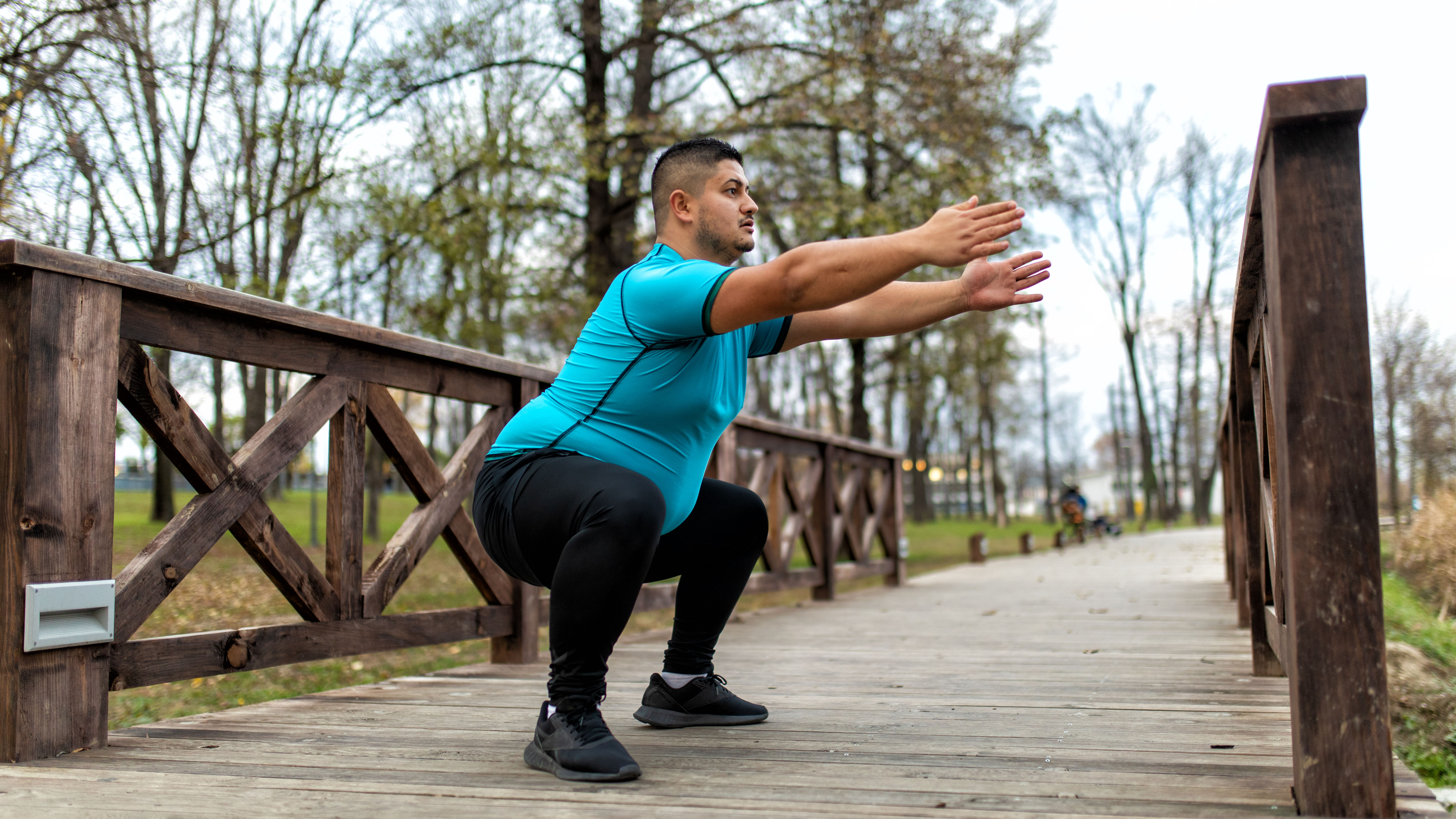
As the name suggests, a bodyweight squat is a squat performed using bodyweight alone. This is a compound movement (one that works multiple muscle groups and joints), and is beneficial for beginners or anyone recovering from injury. It also helps you to learn the fundamentals of squat form without any additional stress from weight-bearing. A squat primarily targets your quads, glutes, and hamstrings, but also strengthens your core and hips, too. It’s brilliant for improving balance, coordination, and range of motion, as well as building a strong foundation for more progressive squat variations.
How to perform this squat:
Stand with your feet hip-width or shoulder-width apart and toes pointed forwards. Pull your shoulder blades back and down. Inhale, brace your core, push your hips back, and bend your knees to lower until your thighs are parallel to the floor. Ensure your chest stays up and your weight remains over your heels rather than in the balls of your feet. As you exhale, drive through your heels to stand. If you're struggling to balance, you can keep your arms out in front of you as a counter-weight.
Front squat
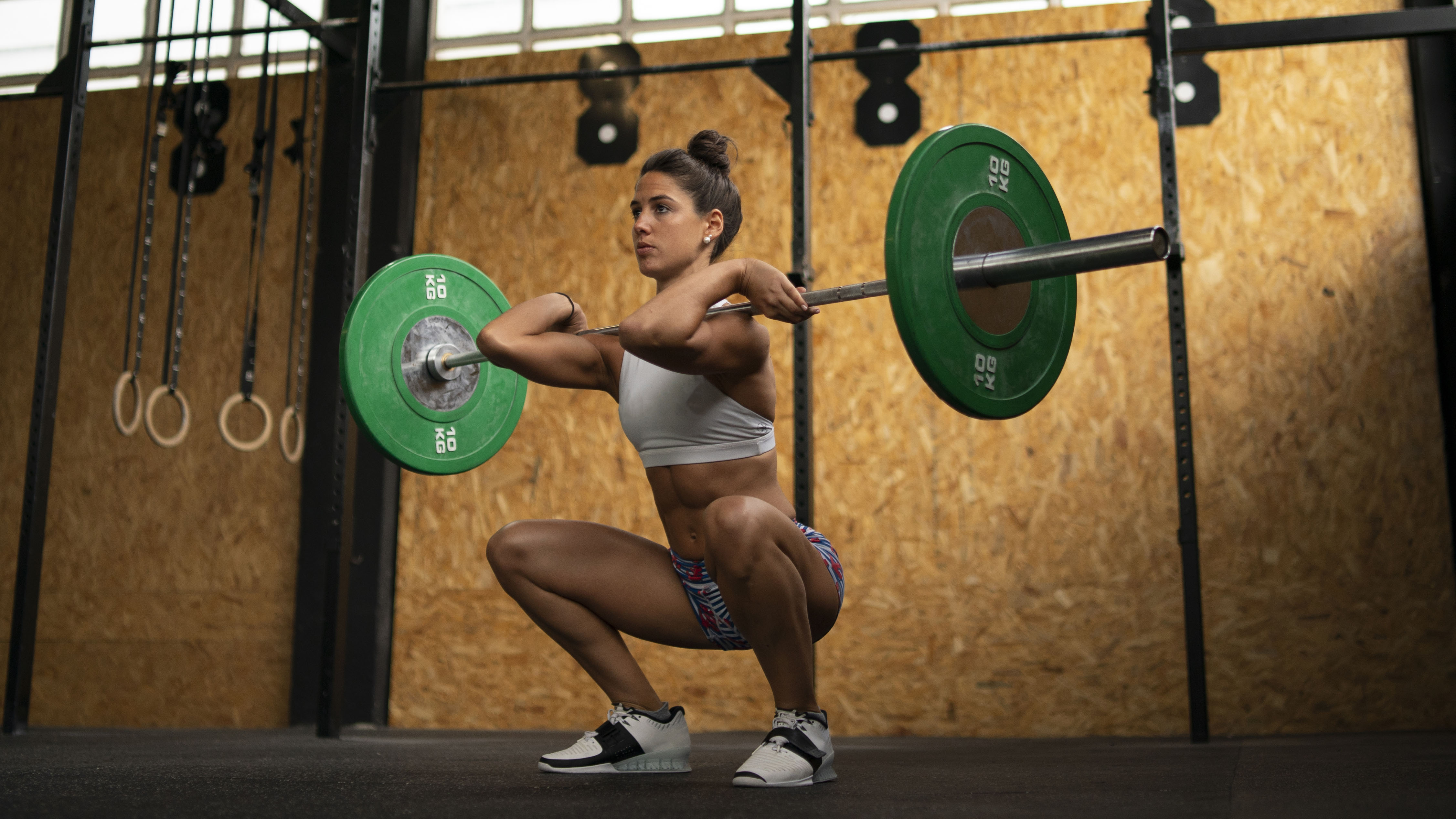
A front squat simply refers to a squat that is front-loaded. For example, racking your weight (like a dumbbell or plate) close to your chest, or a barbell across the front of your deltoids (shoulders). The benefits of a front squat include strengthening your hips and core, as well as working your quads, hamstrings, and glutes. Front squats place more emphasis on your anterior chain (the muscle groups located in the front of your body) and are a quad-dominant exercise. This form of squat also puts less stress on your knees which can help prevent injury and improve range of motion.
How to perform a front squat:
Rack your weight up to your chest and shoulders (placement will depend on which type of weight you are using), and stand with your feet shoulder-width apart – toes pointed forwards. Inhale, brace your core, push your hips back, and bend your knees to lower until your thighs are parallel to the floor. Ensure your chest stays up and your weight remains over your heels, rather than in the balls of your feet. As you exhale, drive through your heels to stand.
Tip: The weight should never track further than your mid foot during a front squat. During barbell front squats, ensure you get under the bar and rest the weight on your shoulders, not your clavicle.
Back squat
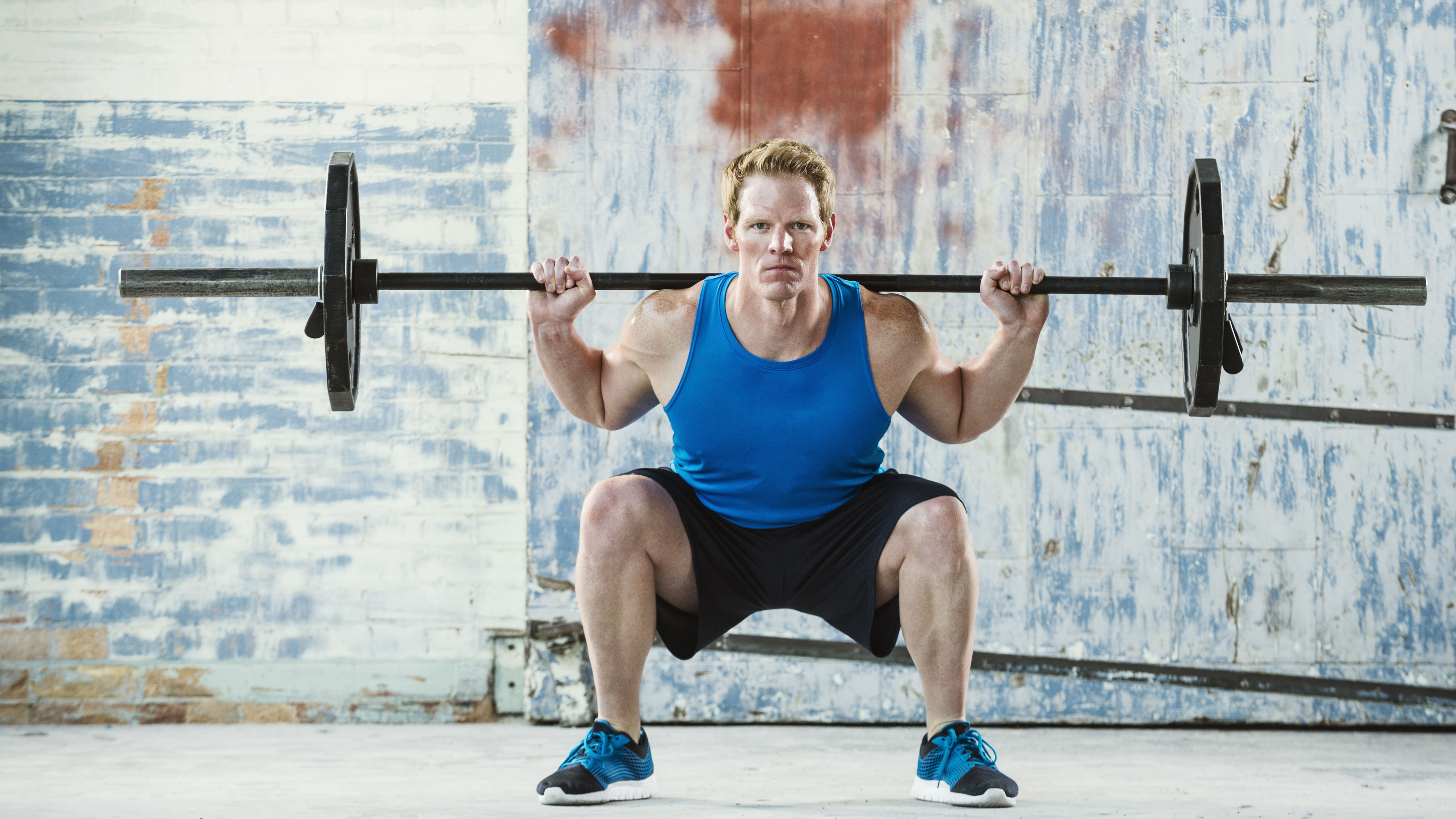
A back squat refers to a squat that is back-loaded using a barbell or similar (like a sandbag.) Back squats work the same muscles, and hold the same benefits, as bodyweight and front squats, but the emphasis is now placed on your posterior chain (the muscle groups located in the back of your body.) This works the hamstrings, glutes, and lower back muscles harder. Back squats also require shoulder and ankle mobility, as well as back muscle activation to help drive and stabilize the movement.
How to perform a back squat:
The barbell (or whichever weight you are using) should be racked onto your traps and rear deltoids (backs of your shoulders.) Stand with your feet shoulder-width apart and toes pointed forwards, or slightly out to 45 degrees. Inhale, brace your core, and keep your body tight, then push your hips back and bend your knees to lower until your thighs are parallel to the floor. Ensure your chest stays lifted and your bodyweight remains over your heels, rather than in the balls of your feet. As you exhale, drive through your heels to stand.
Single-leg squat
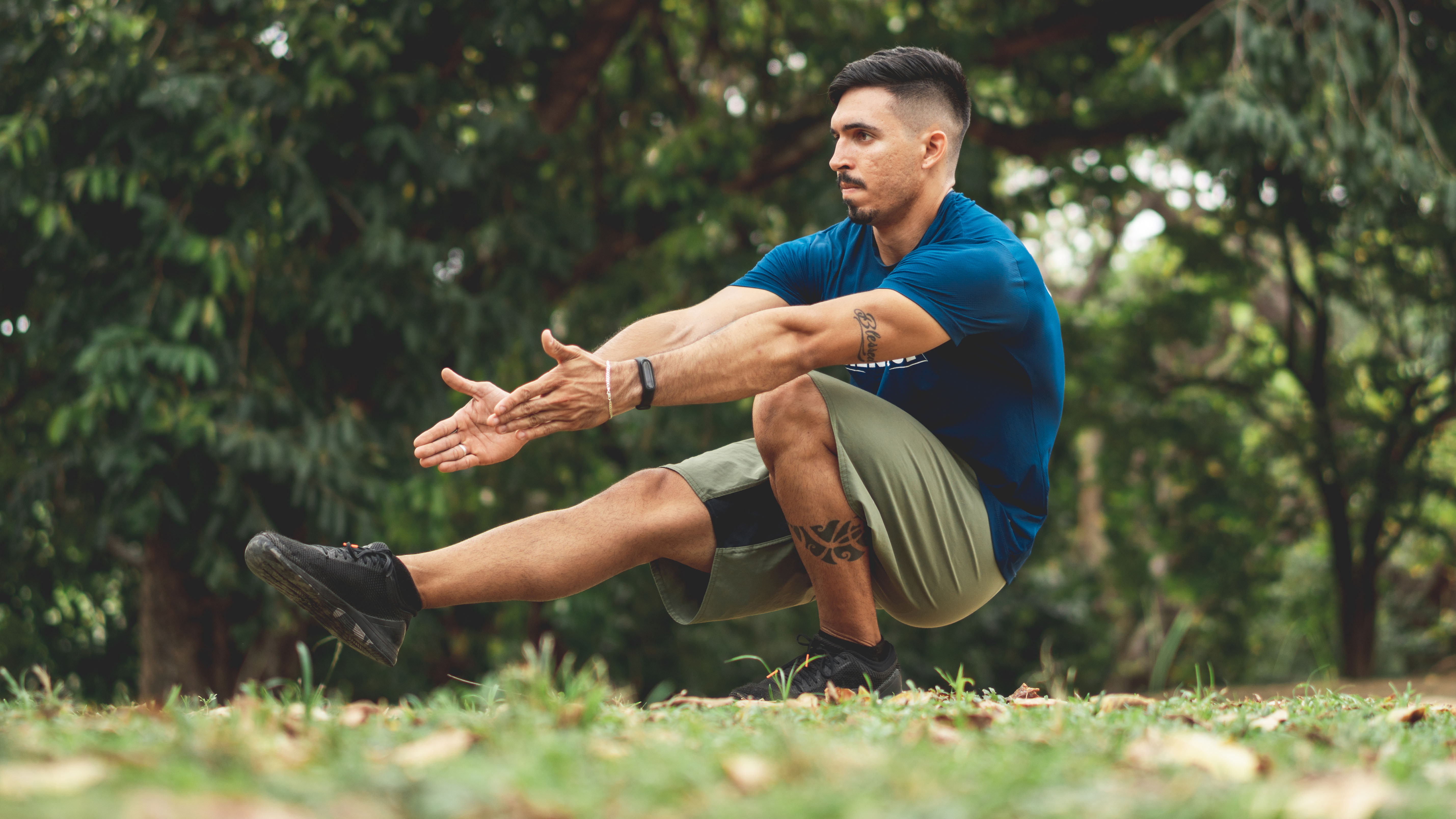
Single-leg squats help improve range of motion, joint mobility, balance, core stability, and coordination. They’re generally used as a progression from a regular squat, and work the same muscles. Single-sided exercises are also great for activating lesser used, and weaker, muscles which can help prevent imbalances and injury. Why? Because your stronger side can’t pick up the slack.
How to perform a single-leg squat:
Stand on one leg and extend your other leg out in front of you – your knee can be bent or fully extended (known as a pistol squat.) Stand tall, brace your core, and find your balance, then squat as low as you can while keeping your chest up and spine straight. Pause at the bottom, then drive through your heel to stand on your exhale, and squeeze your glutes at the top. Swap sides.
Tip: Your knee should never track over your toes and your weight should remain in your heel.
Bulgarian split squat
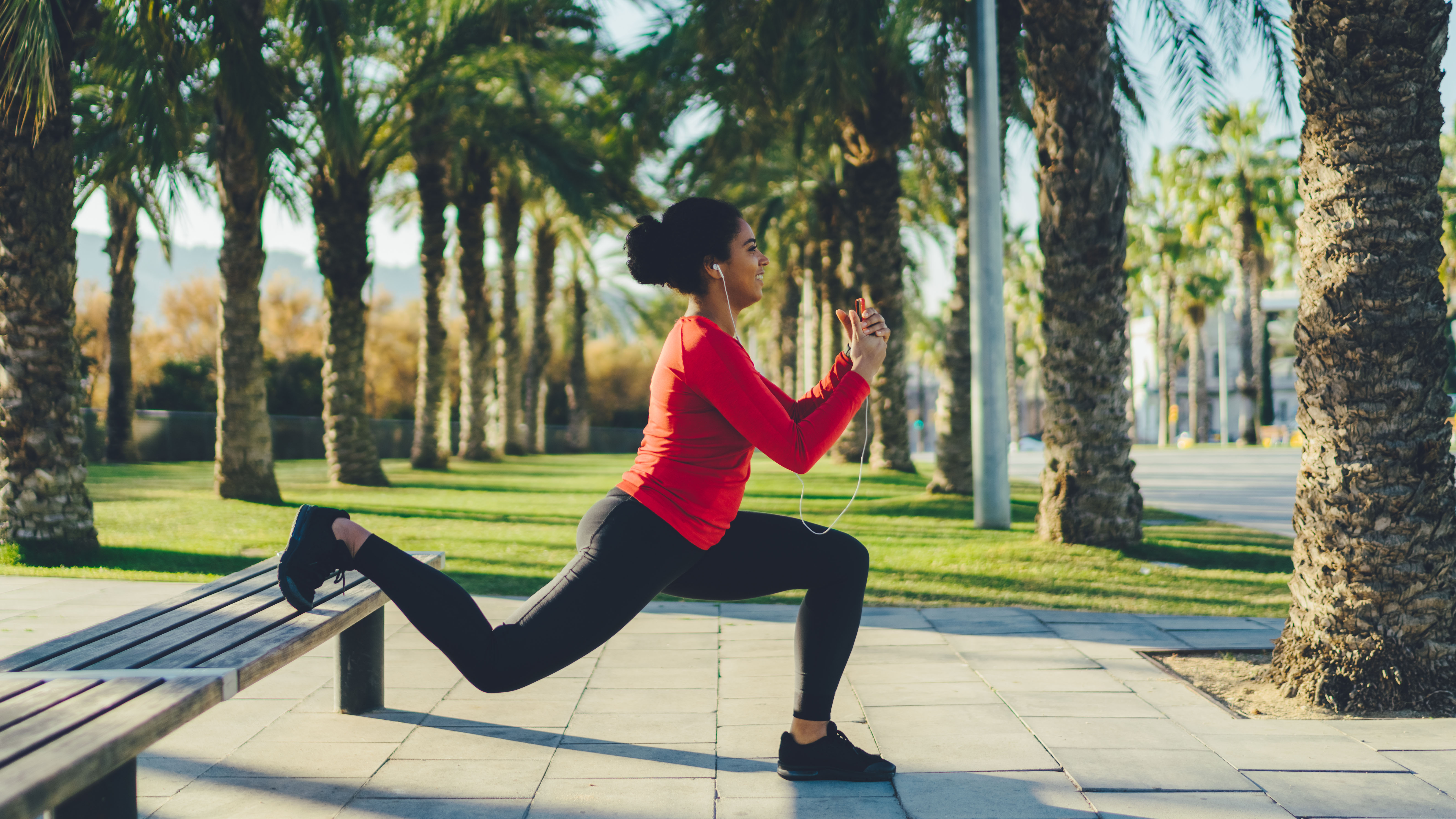
This squat variation involves having your rear leg elevated behind you on a box or bench, and works the quads, glutes, and hamstrings. The emphasis is on the quads during this exercise, but leaning slightly forwards can also improve glute activation.
How to do a bulgarian split squat:
Use a stable surface like a knee-high box or bench, and extend one leg behind you to rest onto it. Toes can be tucked or untucked. If performing with weights, hold one in each hand by your sides. Keep your chest lifted, spine straight, and hips square, then bend your front leg and lower your back knee towards the ground. As you exhale, push through your front heel to stand and squeeze your glutes. Swap sides.
Tip: Lean slightly forwards for optimal movement. Ensure you have enough space between you and the box or bench.
Bibliography
- Strength and Conditioning Journal (2012). Are Deep Squats a Safe and Viable Exercise? 34 (2), 34-36. https://doi.org/10.1519/SSC.0b013e31824695a3
- BMC Sports Sci Med Rehabilitation (2018) How to squat? Effects of various stance widths, foot placement angles and level of experience on knee, hip and trunk motion and loading. 10 (14). Jul 17. https://pubmed.ncbi.nlm.nih.gov/30026952/
- Journal of strength and conditioning research (2016). Kinematics and Kinetics of Squats, Drop Jumps and Imitation Jumps of Ski Jumpers. 30(3), 643–652. https://journals.lww.com/nsca-jscr/Fulltext/2016/03000/Kinematics_and_Kinetics_of_Squats,_Drop_Jumps_and.7.aspx
- Weight Management - Challenges and Opportunities (2022). Resistance Training and Weight Management: Rationale and Efficacy. https://doi.org/10.5772/intechopen.101840
- Peer Journal (2021) Quadriceps femoris cross-sectional area and specific leg strength: relationship between different muscles and squat variations. https://doi.org/10.7717/peerj.12435
- Personal Training Quarterly, (2019). Anthropometrical considerations for customizing the squat pattern. 4,5 https://www.nsca.com/contentassets/65ff7dabfee140d4876c556ddb748fef/ptq-5.4.1-anthropometrical-considerations-for-customizing-the-squat-pattern.pdf
- British journal of sports medicine, (2018). A systematic review, meta-analysis and meta-regression of the effect of protein supplementation on resistance training-induced gains in muscle mass and strength in healthy adults. 52(6), 376–384. https://doi.org/10.1136/bjsports-2017-097608
Becks is a freelance journalist and writer writing for a range of titles including Stylist, The Independent and LiveScience covering lifestyle topics such as health and fitness, homes and food. She also ghostwrites for a number of Physiotherapists and Osteopaths. When she’s not reading or writing, you’ll find her in the gym, learning new techniques and perfecting her form.
- Sam HopesStaff writer



